If you’re dreaming of a garden filled with life and joy, then it’s time to unlock your green thumb and learn how to garden today! Whether you’re a seasoned gardener or a beginner, there are resources available to help you cultivate the garden of your dreams.
One resource is an eBook called “The Green Thumb’s Odyssey.” This eBook provides a roadmap to gardening, with 15 chapters that cover everything from understanding the importance of sunlight to cultivating blossoms of joy and embracing gardening as a journey of personal growth. The eBook offers practical tips and techniques, as well as poetic insights, to make gardening an enchanting experience. By purchasing the eBook, you will also receive a bonus chapter on organic gardening.
Another source of information is an article that highlights the benefits of starting your own vegetable garden. Not only does it provide access to fresh, organic produce, but it also reduces dependence on store-bought vegetables packaged in plastic. By growing your own vegetables, you can reduce waste and cut down on carbon emissions associated with transporting food. The article suggests starting with easy-to-grow vegetables like tomatoes, lettuce, cucumbers, and zucchini, and provides tips on preparing the soil, watering and caring for your plants, and harvesting your vegetables.
Key Takeaways:
- Gardening is a necessary step towards a healthier planet, not just a hobby.
- The Green Thumb’s Odyssey” eBook provides a comprehensive guide to gardening with practical tips and poetic insights.
- Starting a vegetable garden reduces waste and carbon emissions associated with transporting food.
- Easy-to-grow vegetables like tomatoes, lettuce, cucumbers, and zucchini are great for beginners.
- Caring for your plants includes preparing the soil, consistent watering, and natural pest control methods.
Why Start a Vegetable Garden?
Starting your own vegetable garden not only provides fresh, organic produce but also reduces waste and cuts down on carbon emissions. By growing your own vegetables, you can have access to high-quality, fresh produce right in your backyard, reducing the need for store-bought vegetables packaged in plastic. This reduces waste and cuts down on carbon emissions associated with transportation of food.
Even if you have limited space, such as a small balcony or window box, you can still yield a satisfying crop by starting with easy-to-grow vegetables like tomatoes, lettuce, cucumbers, and zucchini. These vegetables require minimal space and care, making them ideal for beginners. As you become more comfortable with gardening, you can expand to more diverse crops.
Ensuring a successful vegetable garden requires fertile, well-drained soil enriched with organic compost before planting. This provides essential nutrients and improves soil structure and water retention. Consistent watering is crucial, watering deeply but infrequently to encourage deep root growth. Monitoring pests and diseases is important, and natural, non-toxic methods should be used for their control.
The most rewarding part of gardening is harvesting the vegetables. Picking them when they are ripe and at their peak flavor is key, and frequent harvesting encourages more production. By growing your own vegetables, you actively contribute to a greener planet by reducing the need for long-distance transportation of food, thus reducing carbon emissions. Additionally, home-grown vegetables do not require plastic packaging, further reducing waste.
In today’s world, every step towards sustainability matters, and starting a vegetable garden is a small but significant action towards a greener planet. It is a testament to the power of individual action and the impact it can have on the world. So, let’s get our hands dirty and start our very own vegetable garden today.
Utilizing Small Spaces for Gardening
You don’t need a large space to start a garden – even a small balcony or window box will do. Gardening is a rewarding hobby that anyone can enjoy, regardless of available space. With a little creativity and some basic gardening knowledge, you can create a lush and thriving garden in a small area.
| Small Balcony | Window Box | Backyard Gardening |
|---|---|---|
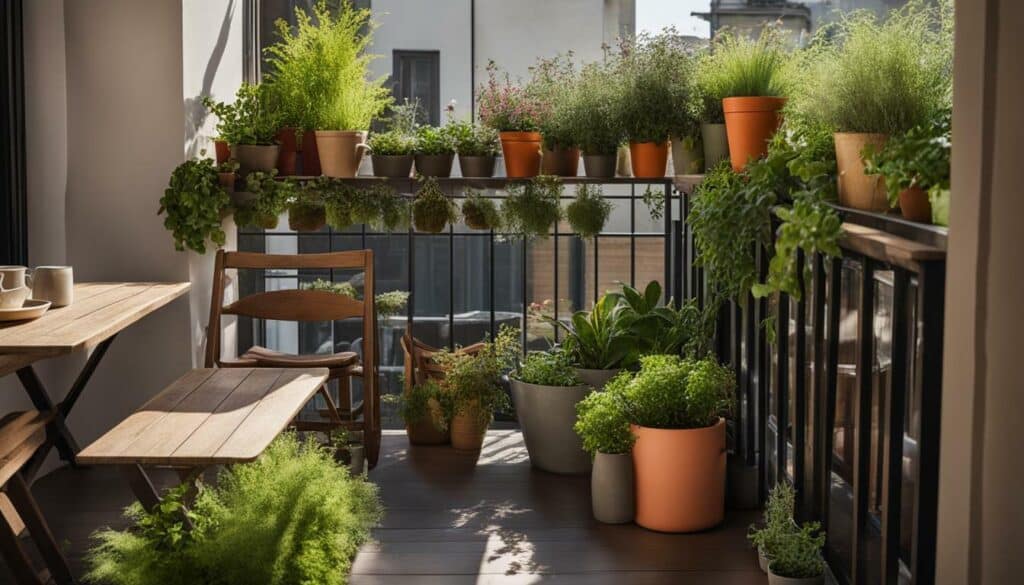 | 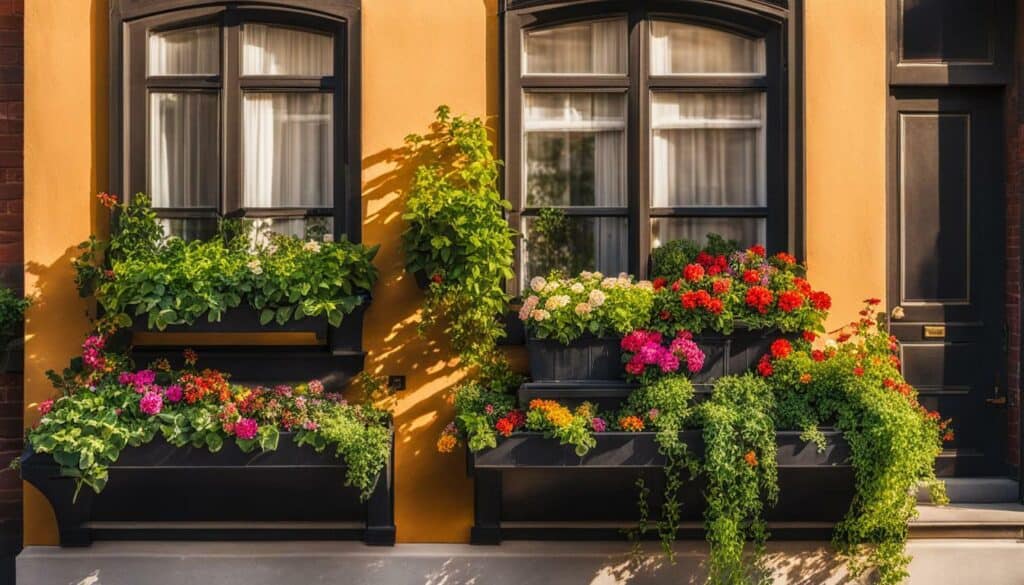 |  |
| Small Balcony: Utilize space by adding vertical elements such as wall planters or hanging baskets. Use compact plant varieties and grow upwards, using trellises or stakes to support vine plants. | Window Box: Choose plants that thrive in a small space with limited soil, such as herbs or succulents. Use a high-quality potting mix and ensure adequate drainage. | Backyard Gardening: Plan your garden by starting small and choosing plants that suit your climate and soil. Make use of raised beds or container gardening for added convenience. |
When choosing plants for a small garden, opt for vegetables that are easy to grow and maintain, such as tomatoes, lettuce, cucumbers, and zucchini. These vegetables are perfect for beginners and will provide a steady supply of fresh produce throughout the growing season.
Before planting, prepare the soil by enriching it with organic compost. Organic compost will provide the necessary nutrients and improve water retention. Use a deep but infrequent watering schedule to encourage deep root growth and prevent water runoff.
Keep an eye out for pests and diseases and use non-toxic methods to control them. By avoiding harmful chemicals, you can create a safe and healthy environment for your plants and yourself.
When your vegetables are ripe and ready for harvest, be sure to pick them at their peak flavor. Freshly picked vegetables are bursting with nutrients and flavor, making them the perfect addition to any meal.
By growing your own vegetables, you are reducing your carbon footprint and contributing to a greener planet. You are also reducing the need for plastic packaging and transportation, which has a positive impact on the environment.
Join the green thumb community and share your gardening journey on social media. Inspire others to start their own small space garden and enjoy the many benefits of gardening.
Choosing Easy-to-Grow Vegetables
Choose easy-to-grow vegetables like tomatoes, lettuce, cucumbers, and zucchini to start your garden journey. These vegetables are suitable for beginners and can thrive even in small spaces like balconies or window boxes. Tomatoes are easy to grow and provide a bountiful harvest. Lettuce is a fast-growing plant that can be harvested in as little as 45 days, making it a popular choice for small gardens. Cucumbers have a high yield and can be grown in pots or hanging baskets. Zucchini is also easy to grow and produces a large quantity of fruit.
When selecting your easy-to-grow vegetables, consider the characteristics and benefits of each one. Tomatoes are rich in nutrients and antioxidants, and can be used in a variety of dishes. Lettuce is low in calories and high in fiber, and is the perfect base for salads. Cucumbers are refreshing and hydrating, and can be pickled or sliced for a snack. Zucchini is a versatile vegetable that can be grilled, roasted, or sautéed.
By choosing easy-to-grow vegetables, you are setting yourself up for success and ensuring a satisfying harvest. These vegetables require minimal effort and can be grown without the use of harmful pesticides or chemicals. Plus, by growing your own vegetables, you are contributing to a greener planet by reducing carbon emissions associated with transporting food.
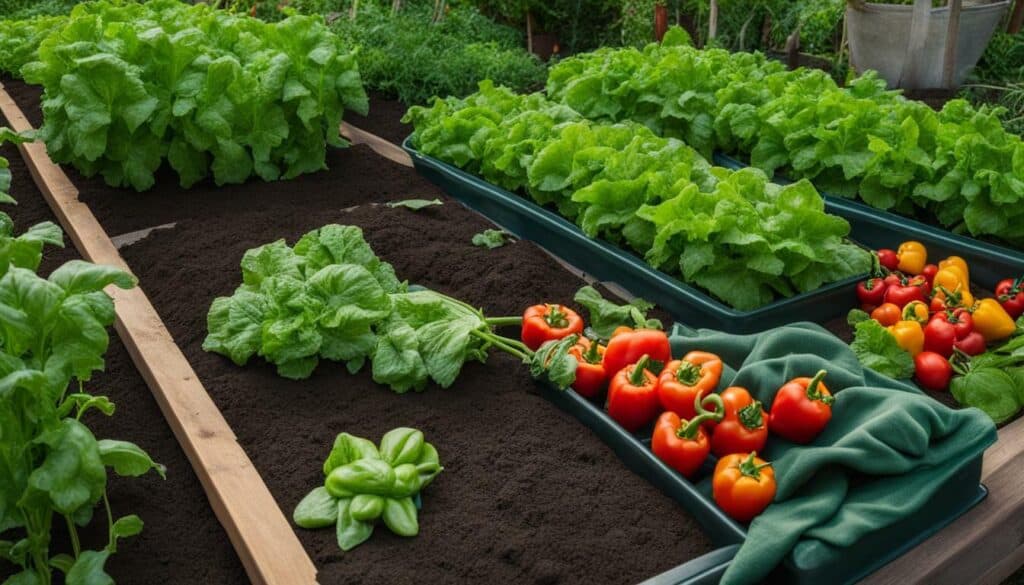
Enriching the soil with organic compost is essential for the successful growth of your vegetables. Compost provides the necessary nutrients for your plants to thrive and ensures healthy soil. Consistent watering is also crucial for maintaining a thriving garden. Water your plants once a week or as needed, depending on the weather and humidity.
Harvest your vegetables when they are ripe and at their peak flavor for maximum enjoyment. There’s nothing quite like the taste of fresh, homegrown produce. By growing your own vegetables, you are not only providing your family with nutritious food, but also inspiring others to do the same.
Choose easy-to-grow vegetables like tomatoes, lettuce, cucumbers, and zucchini, and start your garden today. You’ll be making a positive impact on the environment and enjoying the benefits of your efforts. Happy gardening!
Enriching Soil with Organic Compost
Enrich your soil with organic compost to create a thriving garden and contribute to a greener planet. By adding organic compost, gardeners provide essential nutrients for plants and improve soil structure and water retention. This can be done by adding compost before planting, or as a top dressing around established plants. Organic compost can be made at home using vegetable scraps, leaves, and grass clippings, or it can be purchased from a garden center.
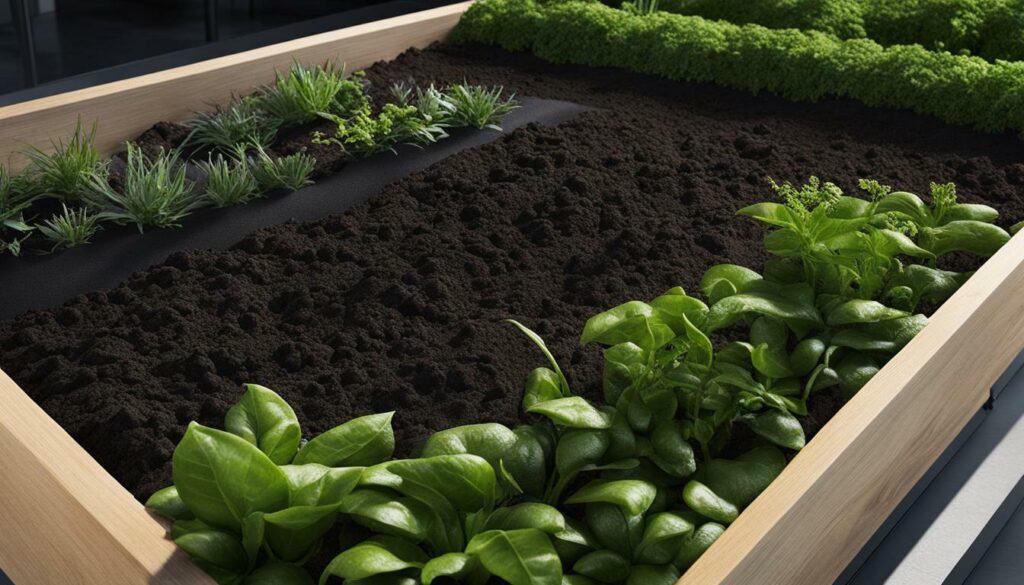
Enriching your soil with compost has many environmental benefits, including reducing the need for synthetic fertilizers and pesticides that can harm the soil and surrounding environment. Starting a vegetable garden also ensures access to fresh, organic produce right in your backyard and reduces waste from plastic packaging.
To get started, choose easy-to-grow vegetables like tomatoes, cucumbers, lettuce, and zucchini. These vegetables require minimal attention and can be grown in small spaces like balconies and window boxes. It’s important to water the plants deeply but infrequently to encourage deep root growth, and pests and diseases should be controlled using natural, non-toxic methods.
Harvesting the vegetables when they are ripe and at their peak flavor is the most rewarding part of the gardening process. Frequent harvesting also encourages more production. By taking this small but significant action, gardeners are actively contributing to a greener planet by reducing the need for long-distance transportation of food and reducing waste.
So, roll up your sleeves, get your hands dirty, and join the green thumb community in enriching the soil with organic compost.
Essential Care for a Thriving Garden
Consistent watering and natural pest control methods are essential for a thriving garden. As a gardener, it is necessary to choose the right vegetables, prepare the soil, and care for your plants to keep them healthy and vibrant.
Begin with easy-to-grow vegetables like tomatoes, lettuce, cucumbers, and zucchini. Once you gain confidence, you can expand your garden to include more diverse crops. Before planting, enrich the soil with organic compost to provide essential nutrients and improve water retention and soil structure.
Maintaining a consistent watering routine is crucial for a thriving garden. Water deeply but infrequently to encourage deep root growth, and avoid overwatering as it can be harmful. Keep an eye out for pests and diseases and use natural, non-toxic methods to control them.
Harvest your vegetables when they are ripe and at their peak flavor for the most rewarding experience. Frequent harvesting encourages more production and keeps your garden vibrant.
By growing your own vegetables, you contribute to a greener planet. Your garden reduces the need for long-distance transportation of food, thus reducing carbon emissions. Additionally, home-grown vegetables eliminate the need for plastic packaging, reducing waste.

Taking care of your garden not only brings fulfillment but also contributes to a healthier planet. Join the green thumb community and start your own vegetable garden today. Inspire others to follow suit, creating a greener, healthier world.
Harvesting Vegetables at Their Peak
Harvest your vegetables when they are ripe for maximum flavor. This is an important aspect of gardening, ensuring that you get the best-tasting and most nutritious produce. When you grow your own vegetables, you have access to fresh, organic produce that is free from packaging, reducing waste and your carbon footprint.
Even if you don’t have a large garden, you can still grow vegetables in a small space like a balcony or window box. Easy-to-grow vegetables like tomatoes, lettuce, cucumbers, and zucchini can thrive in these small spaces.
Preparing the soil is important for growing healthy plants. Enrich the soil with organic compost to provide essential nutrients and improve soil structure. Consistent watering is crucial, with deep but infrequent watering promoting root growth. Be mindful of pests and diseases and use natural, non-toxic methods to control them.
Harvesting vegetables frequently encourages further production, and it should be done when the vegetables are ripe and at peak flavor. It’s essential to identify when vegetables are ready for harvest to get the best results.
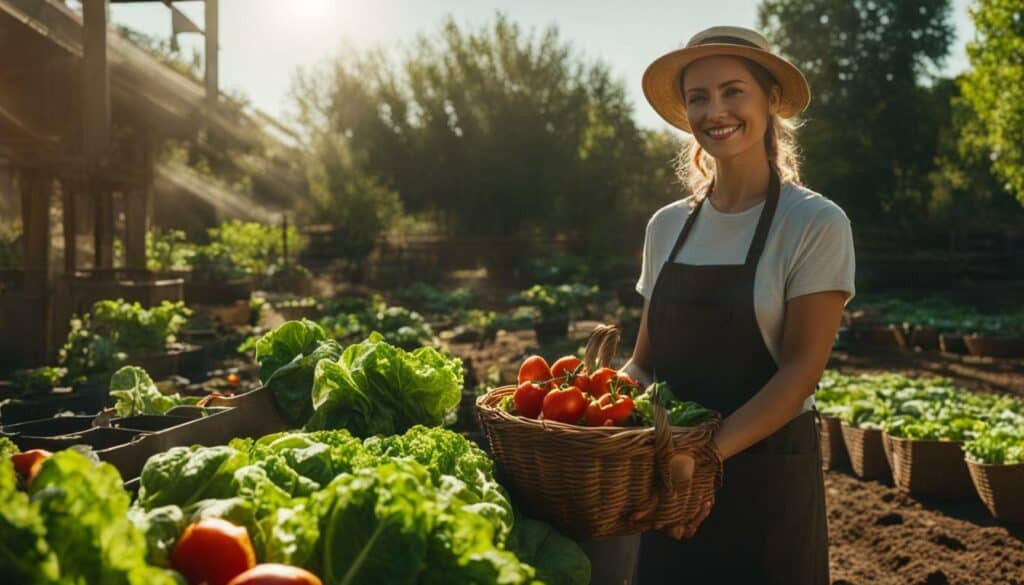
Growing vegetables at home can contribute to a greener planet by reducing the need for long-distance transportation and plastic packaging. It’s a small but significant action towards sustainability and can inspire others to join the green thumb community and create a healthier planet.
Inspiring Others Through Social Media
Share your gardening journey on social media to inspire others. By posting photos, tips, and stories on platforms like Instagram and Facebook, you can create a community of like-minded individuals who share a passion for gardening. Seeing the success of others can encourage those who may be hesitant to start their own garden or are unsure of where to begin.
Sharing your experiences can also provide a sense of connection and inspire others to take up gardening, even if they live in small spaces or have limited time. By using hashtags like #gardeningtips and #growyourown, you can reach a wider audience and connect with others who share your interests.
Through social media, you can highlight the benefits of gardening, such as reducing carbon emissions, promoting sustainability, and enjoying fresh, organic produce. By sharing your journey and the impact gardening has had on your life, you can inspire others to start their own garden and contribute to a greener and healthier planet.
So don’t be afraid to share your gardening journey on social media! Whether you’re a beginner or an experienced gardener, your experiences and successes can inspire others to join the green thumb community and start their own journey towards a more sustainable future.
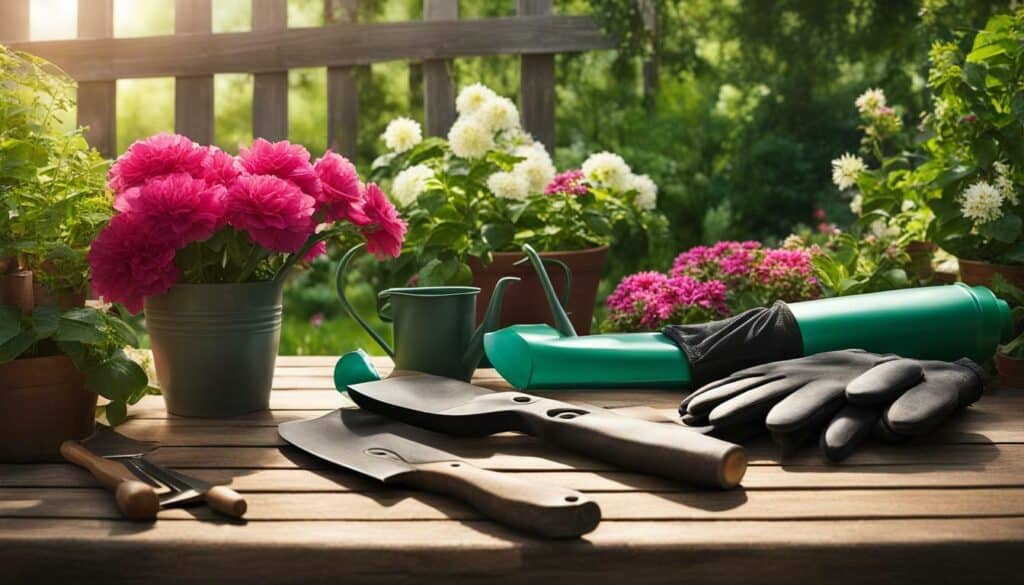
Contributing to a Greener Planet
By growing your own vegetables, you actively contribute to a greener planet and make a positive impact on the environment. By reducing the need for store-bought vegetables, you decrease the amount of plastic packaging and transportation required to get those vegetables to your plate. This leads to a lower carbon footprint, which is essential for the health and well-being of our planet.
Choosing easy-to-grow vegetables and utilizing small spaces such as balconies or window boxes, can make a significant difference. Preparing the soil with organic compost, watering and caring for plants properly, and using natural pest control methods, are all essential steps to ensure a thriving home vegetable garden. By doing so, you can reduce waste and carbon emissions and enjoy fresh, organic produce right at home.
Experts also recommend embracing the sun’s energy by using solar-powered garden tools and conserving water through drip irrigation systems. Nurturing a garden can also provide a sense of joy and connection with nature, giving you a heightened appreciation for the environment and the benefits it provides.
Whether gardening alone, or as a family, the benefits of growing your own vegetables are endless. Not only can it teach children responsibility and foster a connection with nature, but it can also reduce reliance on store-bought vegetables and contribute to a healthier planet. With the right tips and techniques, anyone can get started on their own green thumb’s odyssey and make a positive impact on the environment.
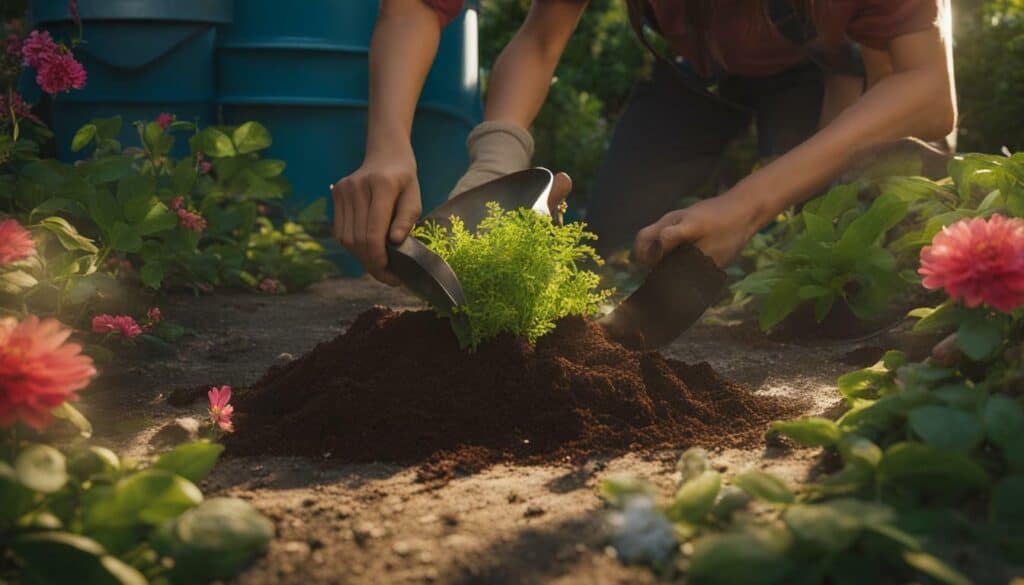
“Growing your own produce reduces reliance on store-bought vegetables, which are often packaged in plastic and transported long distances.”
Introduction to Flower Gardening
Discover the joy of flower gardening and add beauty to your surroundings. Flower gardening is a captivating journey of growth and creativity, allowing individuals to cultivate their own garden oasis filled with vibrant blooms and natural beauty. Whether you are a seasoned gardener or a beginner, this introduction to flower gardening will provide you with the essential knowledge to embark on this enchanting adventure.
Finding the Perfect Spot
When starting a flower garden, it is important to find a sunlit corner where plants can thrive. Just like divas, flowers adore the limelight and require sunlight to blossom to their full potential.
Preparing the Soil
The key to a successful flower garden lies in fertile, well-drained soil. Before planting, enrich the soil with organic compost to provide essential nutrients and improve water retention.
Choosing the Right Flowers
There is a wide variety of flowers to choose from, each with their own unique beauty and characteristics. Depending on your preferences, select flowers that resonate with your aesthetic preferences and create a colorful and visually pleasing garden.
Planting and Nurturing
Once you have prepared the soil and chosen your flowers, it is time to plant them and provide proper care. Follow the instructions for each type of flower regarding spacing and depth. Water them regularly, but be mindful not to overwater, as it can be harmful to the plants. Additionally, keep an eye out for pests and diseases and use natural, non-toxic methods to control them.
The Joy of Flower Gardening
Flower gardening is not only a way to beautify your surroundings but also a means to connect with nature and reduce your carbon footprint. By cultivating your own garden, you can enjoy the fresh beauty of flowers while positively impacting the environment.
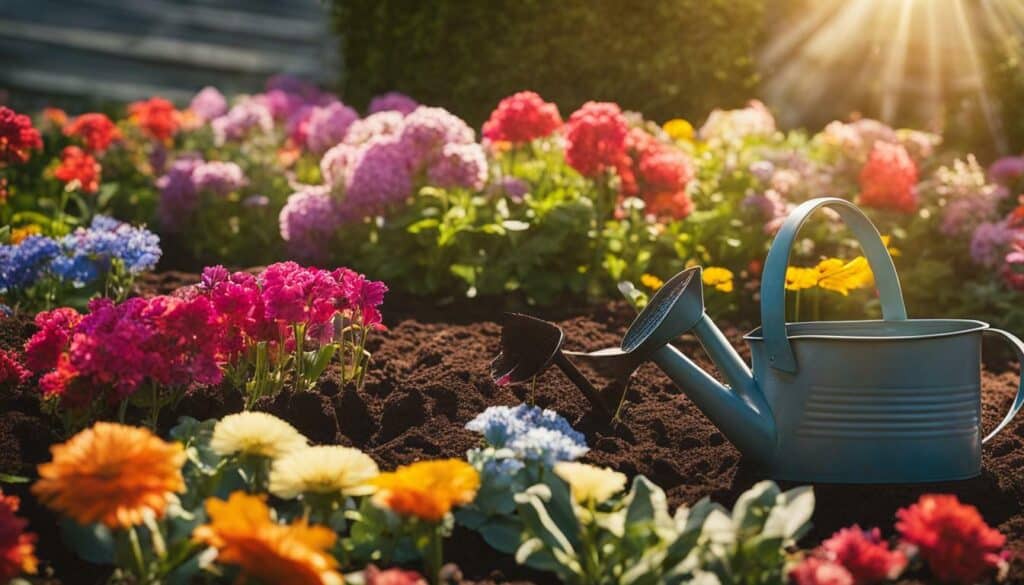
Conclusion
Flower gardening offers a rewarding and fulfilling experience for individuals of all experience levels. It allows you to create a vibrant and enchanting garden that brings joy, beauty, and a sense of connection with nature. So, roll up your sleeves, get your hands dirty, and start cultivating your own flower garden today.
Exploring Backyard and Indoor Gardening
Expand your gardening horizons with backyard gardening and indoor gardening. If you have more outdoor space, consider transforming it into a vegetable garden. Even a small plot can yield a bountiful harvest of fresh, healthy vegetables. Alternatively, if you live in an apartment or have limited space, you can still enjoy the benefits of gardening by using containers or window boxes.
Backyard gardening is a great way to get started with growing your own vegetables. You can choose from a variety of easy-to-grow vegetables like tomatoes, lettuce, cucumbers, and zucchini that thrive in most climates.
| Vegetable | Characteristics | Benefits |
|---|---|---|
| Tomatoes | Easy to grow, abundant yields | Rich in lycopene and vitamin C |
| Lettuce | Fast-growing, low-maintenance | High in fiber and vitamins A and C |
| Cucumbers | High-yield, easy to grow | Rich in vitamins and minerals, hydrating |
| Zucchini | Fast-growing, versatile | Low in calories and high in vitamin C |
For those with limited outdoor space, indoor gardening is a great option. You can grow herbs, microgreens, and even small fruits and vegetables in containers that fit on a windowsill or under grow lights. Growing your own food indoors not only provides access to fresh produce, but it also adds a natural touch to your indoor decor.
Whether you choose backyard gardening or indoor gardening, the key to a thriving garden is fertile, well-drained soil enriched with organic compost. Consistent watering and natural pest control methods like companion planting and introducing beneficial insects help ensure healthy plant growth. Frequent harvesting of vegetables at their peak ensures maximum flavor and nutrient content.
By growing your own vegetables, you can actively contribute to a greener planet. You reduce the need for long-distance transportation of food and minimize plastic waste from grocery store packaging. Starting your own vegetable garden is a small but significant action towards sustainability that can inspire others to do the same and create a healthier planet.
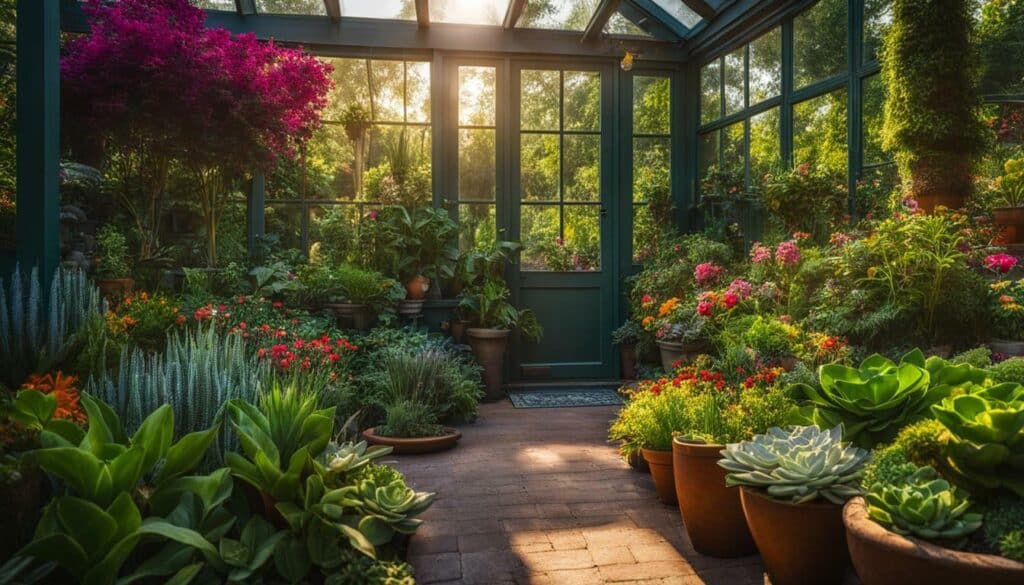
So why not start your own backyard or indoor vegetable garden today? It’s a rewarding and environmentally friendly activity that offers numerous benefits for you and the planet.
Conclusion
Dive into the world of gardening today and unlock your green thumb! Gardening is not just a hobby but a way to cultivate a healthier planet and connect with nature. Starting a vegetable garden is an excellent way to access fresh, organic produce while reducing dependence on store-bought vegetables packaged in plastic. Even with limited space, it is possible to grow a satisfying crop of easy-to-grow vegetables like tomatoes, lettuce, cucumbers, and zucchini.
The key to success lies in preparing fertile, well-drained soil with organic compost and maintaining a consistent watering routine. By growing your own vegetables, you actively contribute to a greener planet by reducing the need for long-distance transportation and plastic packaging. Starting a vegetable garden is a small but significant action towards sustainability and encourages others to follow suit.
So, roll up your sleeves, get your hands dirty, and join the green thumb community in creating a healthier, more environmentally friendly world. Get started today with these gardening tips and see the positive impact it can have on your life and on the planet.
FAQ
Q: What are the benefits of starting a vegetable garden?
A: Starting a vegetable garden provides fresh, organic produce, reduces waste, and cuts down on carbon emissions.
Q: Do I need a large space to start a garden?
A: No, even a small balcony or window box can be used for gardening. If you have space, you can also consider backyard gardening.
Q: Which vegetables are easy to grow for beginners?
A: Some easy-to-grow vegetables for beginners include tomatoes, lettuce, cucumbers, and zucchini.
Q: How can I enrich my soil with organic compost?
A: To enrich your soil, you can create and use organic compost. This will ensure healthy plant growth and nutrient-rich soil.
Q: What care is essential for a thriving garden?
A: Consistent watering and using natural pest control methods are essential for maintaining a thriving garden without harmful chemicals.
Q: When should I harvest my vegetables?
A: Harvest your vegetables when they are ripe for maximum flavor and nutrient content. Look for visual cues to determine if they are ready.
Q: How can I inspire others through my gardening journey?
A: Share your gardening journey on social media to inspire others. Post photos, tips, and experiences to create a community and spread the joy of gardening.
Q: How does growing your own vegetables contribute to a greener planet?
A: Growing your own vegetables helps reduce carbon footprint, promotes sustainability, and makes a positive impact on the environment.
Q: What is flower gardening?
A: Flower gardening involves growing flowers for their beauty and therapeutic benefits. It adds color and fragrance to your outdoor space.
Q: Can I garden indoors?
A: Yes, indoor gardening is a great option for those with limited outdoor space. It allows you to grow plants indoors and enjoy the benefits of gardening.
Q: How do I get started with gardening?
A: To get started with gardening, choose a suitable space, select easy-to-grow vegetables and flowers, enrich your soil, provide consistent care, and share your journey with others.
What Are the Basic Steps for Beginners to Start Gardening?
Starting a beginner’s plant gardening journey begins with choosing the right plants for your garden. Consider factors like sunlight, soil type, and climate. Prepare the soil by removing weeds and adding compost. Plant the seeds or seedlings, following the recommended depth and spacing. Water regularly, keeping the soil moist but not waterlogged. Finally, provide proper care by fertilizing, pruning, and protecting from pests.
Source Links
- https://growtherainbow.com/products/ebook-the-green-thumbs-odyssey
- https://flyingtiger.com/blogs/news/green-thumb
- https://www.grosalon.com/green-thumb-greener-planet-how-to-start-your-own-vegetable-garden/
- https://www.amazon.com/Organic-Gardening-unlock-green-thumb/dp/B08CP93DCZ
- https://www.finegardening.com/article/9-reasons-to-start-a-vegetable-garden
- https://growagoodlife.com/grow-your-own-organic-food/
- https://www.bhg.com/gardening/vegetable/vegetables/planning-your-first-vegetable-garden/
- https://extension.umn.edu/yard-and-garden-news/gardening-small-spaces
- https://www.thespruce.com/vegetable-gardening-in-small-spaces-1403451
- https://www.almanac.com/small-space-gardening-5-tips-growing-more
- https://www.almanac.com/content/10-easy-vegetables-grow-seed
- https://www.homesandgardens.com/gardens/easiest-vegetables-to-grow
- https://getbusygardening.com/easy-to-grow-vegetables/
- https://growingorganic.com/soil-guide/guide-to-organic-soil-enrichment-and-reamendment/
- https://growagoodlife.com/improve-garden-soil/
- https://www.bhg.com/gardening/yard/soil/creating-rich-organic-soil-in-your-garden-281474979752803/
- https://www.huffpost.com/entry/vegetable-garden-tips_l_641e1bdde4b03793a8af95b1
- https://www.bhg.com/gardening/yard/garden-care/gardening-tips-for-every-gardener/
- https://zenyrgarden.com/essential-tips-to-help-your-garden-keep-thriving/
- https://hortnews.extension.iastate.edu/vegetable-harvest-guide
- https://www.thespruce.com/when-to-harvest-vegetables-1403402
- https://hgic.clemson.edu/factsheet/harvesting-vegetables/
- https://farmflavor.com/lifestyle/10-gardening-instagram-accounts-you-should-be-following/
- https://www.thecottagejournal.com/grow-your-autumn-garden-inspiration-with-these-7-social-media-accounts/
- https://www.blackgirlsgardeningincontainers.com/post/14-black-container-gardeners-to-follow-for-inspiration-on-social-media
- https://www.greenmatters.com/p/how-gardening-helps-environment
- https://www.rhs.org.uk/gardening-for-the-environment/planet-friendly-gardening-tips
- https://www.ncbi.nlm.nih.gov/pmc/articles/PMC9603381/
- https://www.prettypurpledoor.com/flower-gardening-for-beginners/
- https://www.agrifarming.in/flower-gardening-for-beginners-tips-and-ideas
- https://www.longfield-gardens.com/article/new-to-flower-gardening-heres-where-to-start
- https://www.forbes.com/home-improvement/lawn-care/indoor-garden-ideas/
- https://www.betterhealth.vic.gov.au/health/healthyliving/gardening-for-children
- https://www.clickandgrow.com/blogs/news/gardening-indoors-vs-gardening-outside-does-it-really-make-a-difference
- https://growingourown.wordpress.com/6-conclusion/
- https://gardenofenglishresources.weebly.com/uploads/8/9/4/3/89432500/7.constructing_intro_and_conclusion_paragraphs.pdf
- https://www.daleharvey.com/in-the-garden/articles-of-interest/PACIFIC STEEL SUTTON PARK/Sutton Park Primary School Gardening Project/Page 5 – Conclusion.html

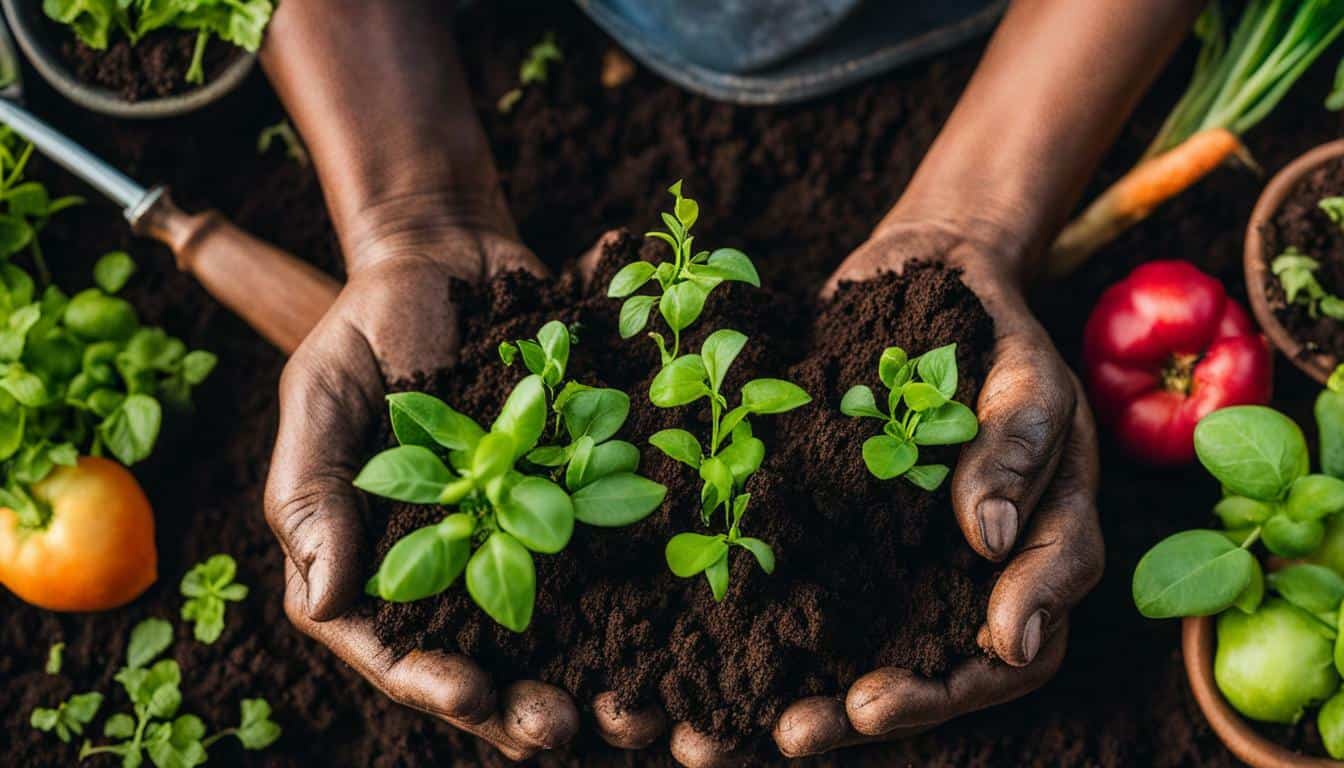



Leave a Reply